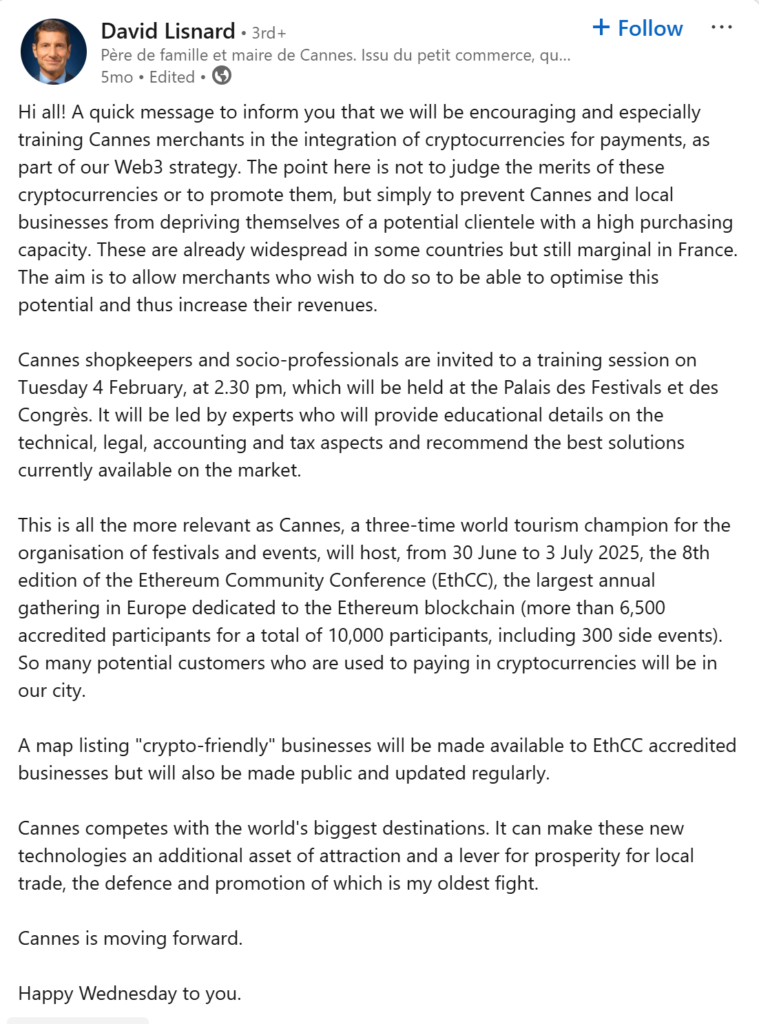- Binance Pay and Lyzi bring crypto payments to 80+ Riviera businesses
- QR-based payments support stablecoins and offer instant euro settlement
- Cannes leads the local push for crypto integration in luxury retail
Crypto payments just got a serious upgrade on one of Europe’s most iconic coastlines.
This week, Binance Pay partnered with French fintech Lyzi to activate crypto payment infrastructure across the French Riviera—stretching from Cannes to Monaco, through Nice and Antibes. Over 80 businesses are now onboard.
The focus here isn’t mass adoption in big cities—it’s targeted integration into high-value tourism zones. We’re talking luxury retailers, beach clubs, hotels, restaurants—the core of Côte d’Azur’s premium economy.
This is what the Cannes Mayor said on LinkedIn:

The type of places where high-net-worth tourists already spend big. Now they can do it in crypto.
The system is built for real-world use. Customers pay with stablecoins or other digital assets by scanning a QR code, and settlements are instant—with no gas fees. For merchants, it’s just as smooth.
They receive immediate euro payouts, bypassing volatility risk entirely. The backend converts in real-time, and the user experience doesn’t skip a beat.
Spend stablecoins & crypto in Cannes & share 9,999 EURI in rewards!
— Binance (@binance) July 2, 2025
Pay with #Binance Pay & enjoy seamless, instant & gas-free crypto payments.
Details 👉 https://t.co/vuT5dj5Jaf pic.twitter.com/rwAjSeCwvt
What’s interesting is how local governments are backing this. Cannes in particular is leaning into the Web3 angle, actively pushing businesses to start accepting crypto as part of a broader future-facing strategy.
This isn’t just fintech pushing adoption—it’s public-private alignment. And that’s rare.
This rollout isn’t trying to onboard the masses. It’s going after a niche that’s already ready: crypto-native tourists, high spenders, and merchants in places where digital payments are already seamless. In this context, crypto isn’t a rebellion—it’s a premium option.
If this works—and it’s looking like it might—it sets a model for other luxury regions across Europe. One step at a time, but this one’s well-placed.





